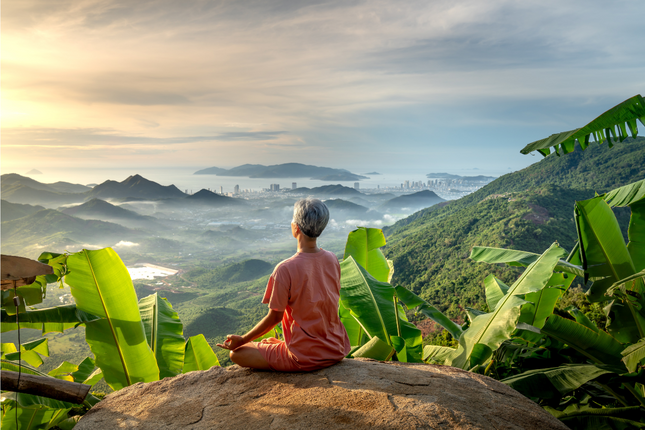Before we start getting to the ins and outs of each, we first need to explain the difference between wellness tourism and medical tourism.
Wellness tourism is aimed at improving our mental and physical wellbeing. Medical tourism most often describes the practice of visiting another country for a medical or dental procedure because of the lower cost – and you get a holiday thrown in.
Wellness tourism
If you’ve been on a yoga retreat in a bushland setting in Australia or travelled overseas to seek spiritual enlightenment through meditation and yoga, you’re part of the global wellness movement. You are being proactive about maintaining or enhancing your health. That health spa or resort doesn’t pretend to be a medical facility but it will have treatments and activities that will make you feel better.
Medical tourism
Medical tourism is pretty much what it says on the tin. This type of travel is to seek a procedure or treatment that is either too expensive in Australia or isn’t offered. Most often we associate medical tourism with cosmetic tourism: the teeth caps, the facelift, the breast enhancement. However, we know from experience that people in Australia will travel overseas for experimental treatments for conditions like Lyme disease or, in most cases, cancer. They might also seek treatment for conditions such as chronic fatigue syndrome.
Pros and cons of wellness tourism
There aren’t too many that we can see apart from possibly overpaying for food and accommodation and, if your ashram or wellness retreat is overseas, polluting the planet from air miles.
On the plus side, retreats can be an excellent means to reset, especially after emotional or physical trauma.
Wellness tourism travellers, especially the younger set, seek unique destinations that offer not only a retreat but a full cultural experience with food, sights and sounds, trekking through natural wonders and more. They might investigate ancient healing practices after seeking out a shaman. The point is that an exotic destination is often an integral part of the wellness experience. Even in Australia, you’ll find wellness retreats nestled in pristine bushland, often by water. Yes, there are city ashrams (well, suburban) but these aren’t often used as a retreat but more on an ad hoc basis.
Last but not least, local communities benefit from wellness retreats and experiences because these experiences tend to be tailored and high quality and are priced accordingly. Travellers will spend money on shopping, transport, exhibitions, travel insurance and more, adding to the vibrancy of the local economy.
Where to go for wellness experiences
This list is by no means comprehensive; these are just a few destinations and experiences that caught our eye or we’ve visited. And if you’ve downsized to a retirement village or land-lease lifestyle, you can lock and leave whenever you’re ready.
- Yoga retreats: South Africa, Bali, Australia, Zambia and pretty much everywhere in India
- Mineral springs and thermal resorts: Texas, USA; Moree in Australia; Mariua Springs and Dunedin, New Zealand; various onsen in Japan; China; Termal, Turkey; and Argentina
- Nordic wellness: Finland, Norway
- Indigenous healing: Peru, Mexico, Brazil
- Ashrams (chanting, yoga, meditation): Australia, India, Bali
- Women-only retreats: Australia, Bali, Costa Rica, New Zealand, Patagonia (and, yes, we know Patagonia isn’t a country
Obviously this list isn’t comprehensive but it should get you started.
Pros and cons of medical tourism
According to the Better Health channel of the Victorian Government, “the global medical tourism industry is worth an estimated $54.6 billion a year and is growing at around 25 per cent annually.” Those figures are from 2017 and are sure to have increased since that year.
People choose to have procedures performed overseas for various reasons: easy access, lower price and, in the case of visible cosmetic surgery, being able to recover without the scrutiny of family and friends.
On the downside, while it might seem like a bargain to have your forehead lifted at a bargain price, you should beware. We’ve heard horror stories about patients with terrible injuries presenting at surgeries of doctors who do reconstructive work. If you must go to have your teeth capped or get a tooth implant, make sure you get recommendations from someone you trust. Should you end up with an infection after surgery and need further treatment in Australia, that treatment might not be covered by Medicare.
Before you consider travelling overseas for a medical or dental procedure, please read the advice from the Australian Government on medical tourism.
Want to learn more about making the most of your next 30 years?
We’re committed to making life better for the over 55s. Check out downsizing.com.au for more insights and great advice on living life to the fullest.


